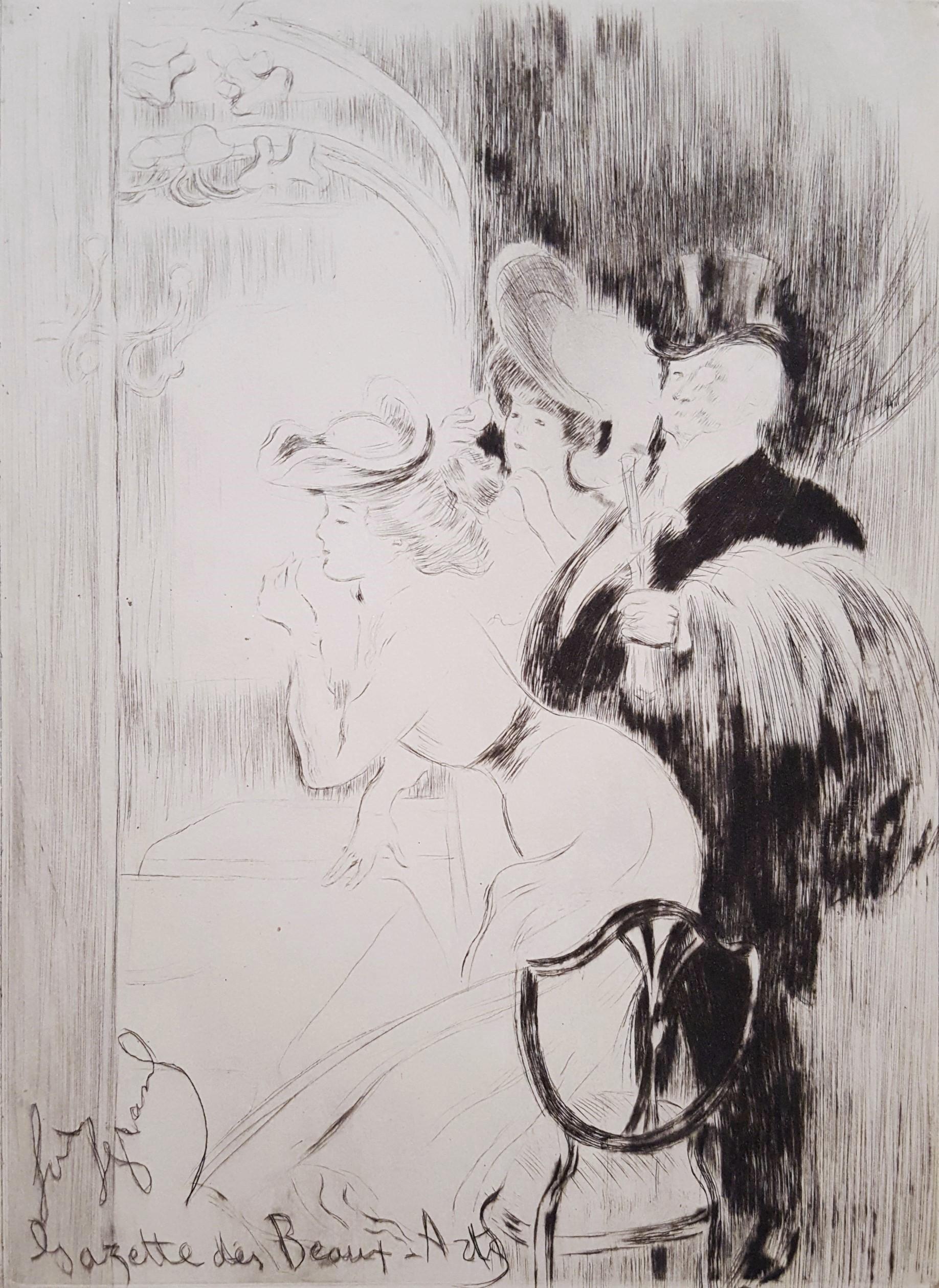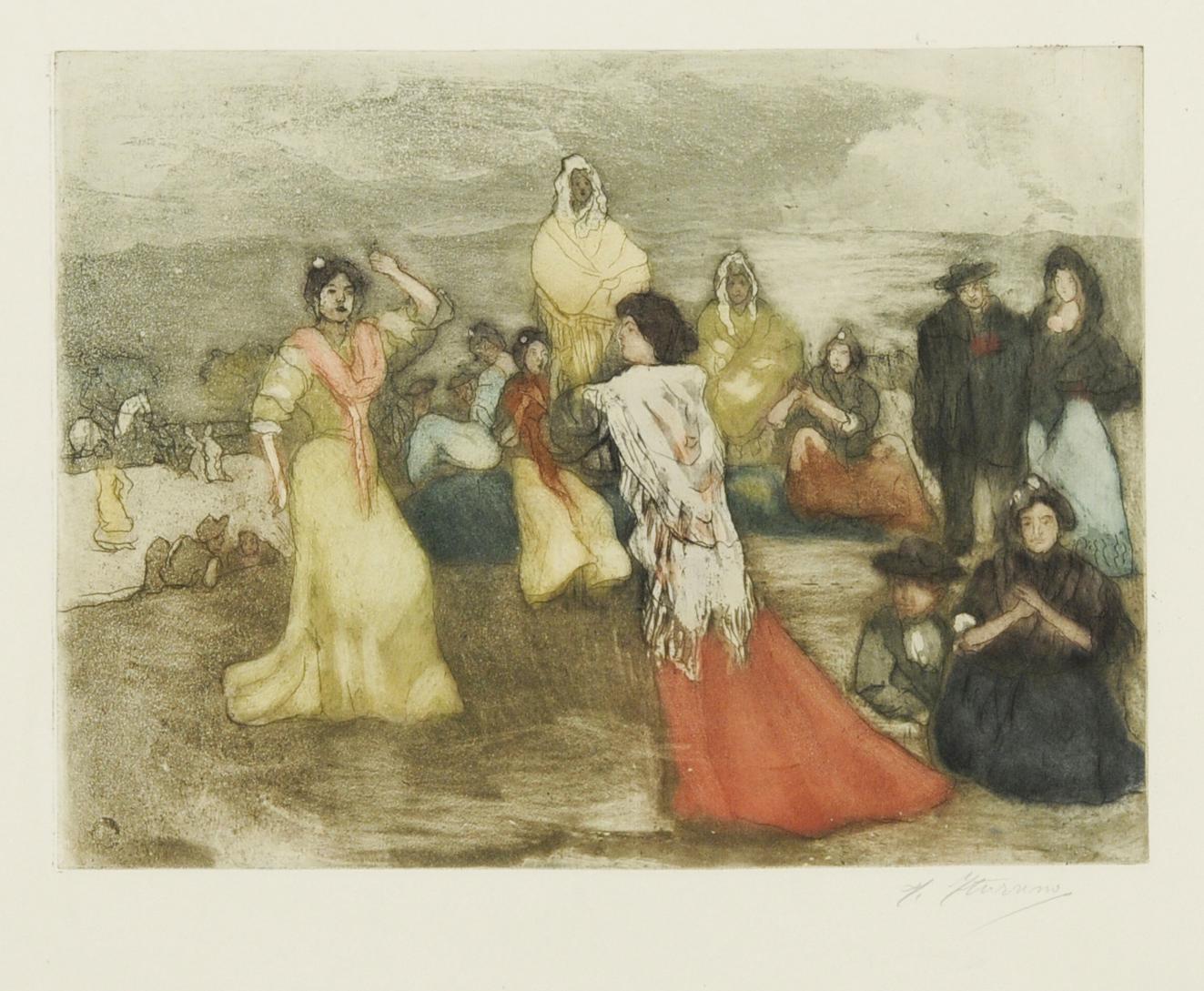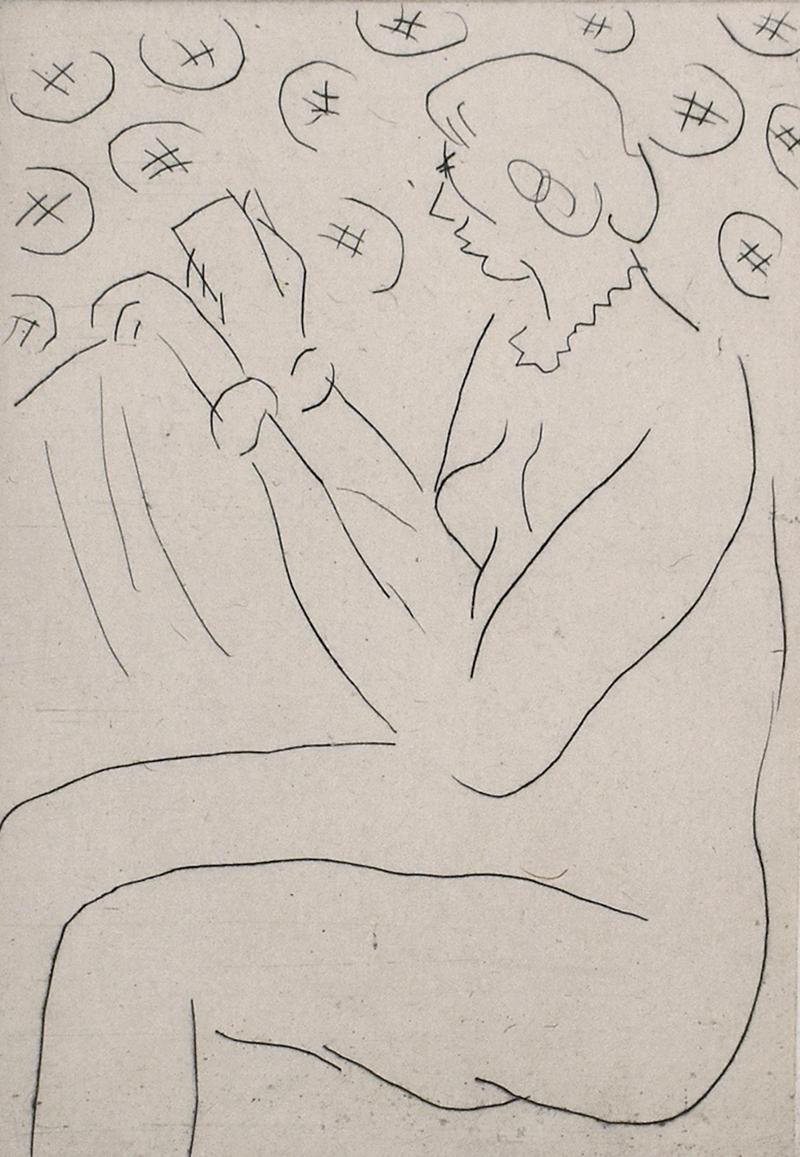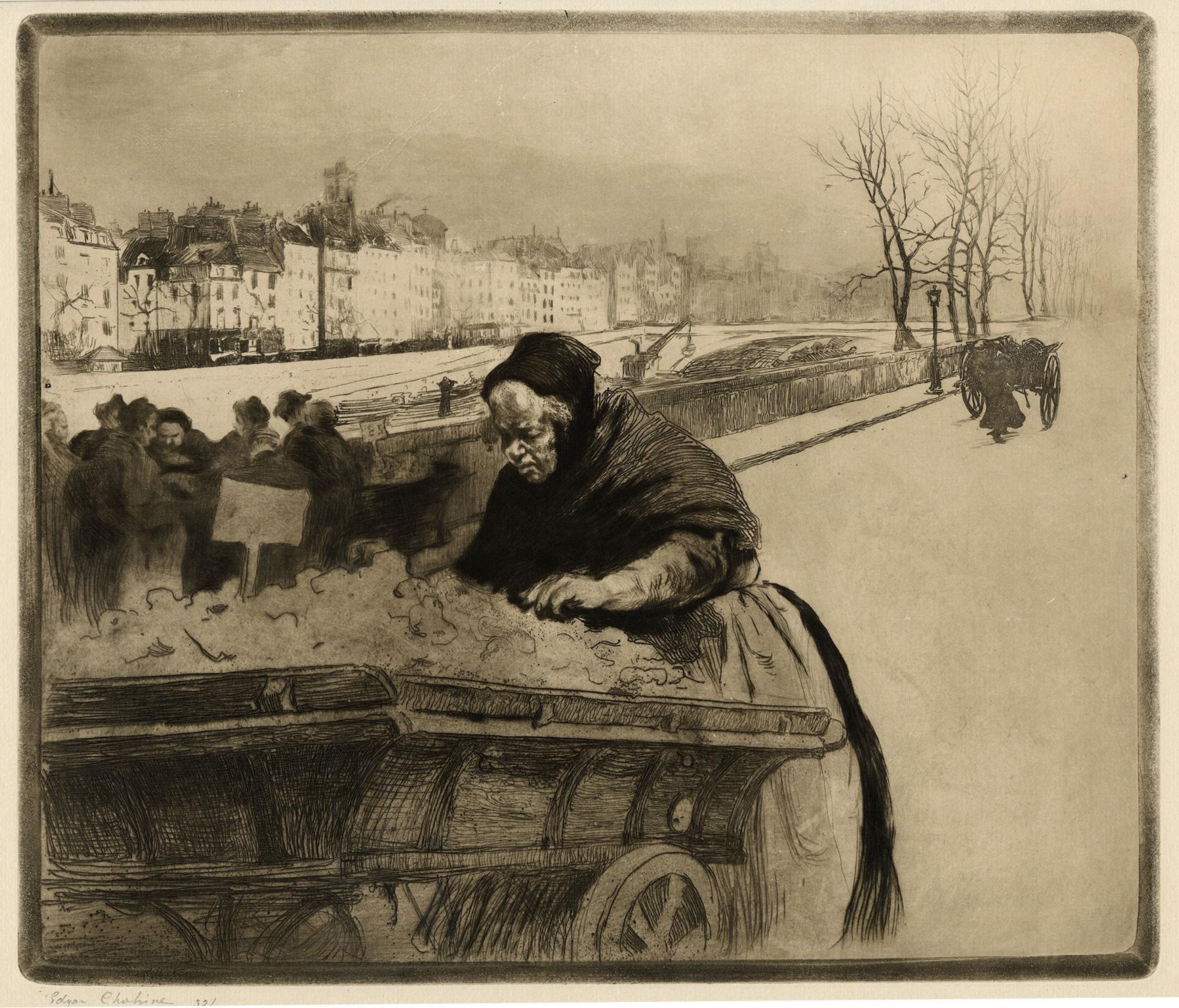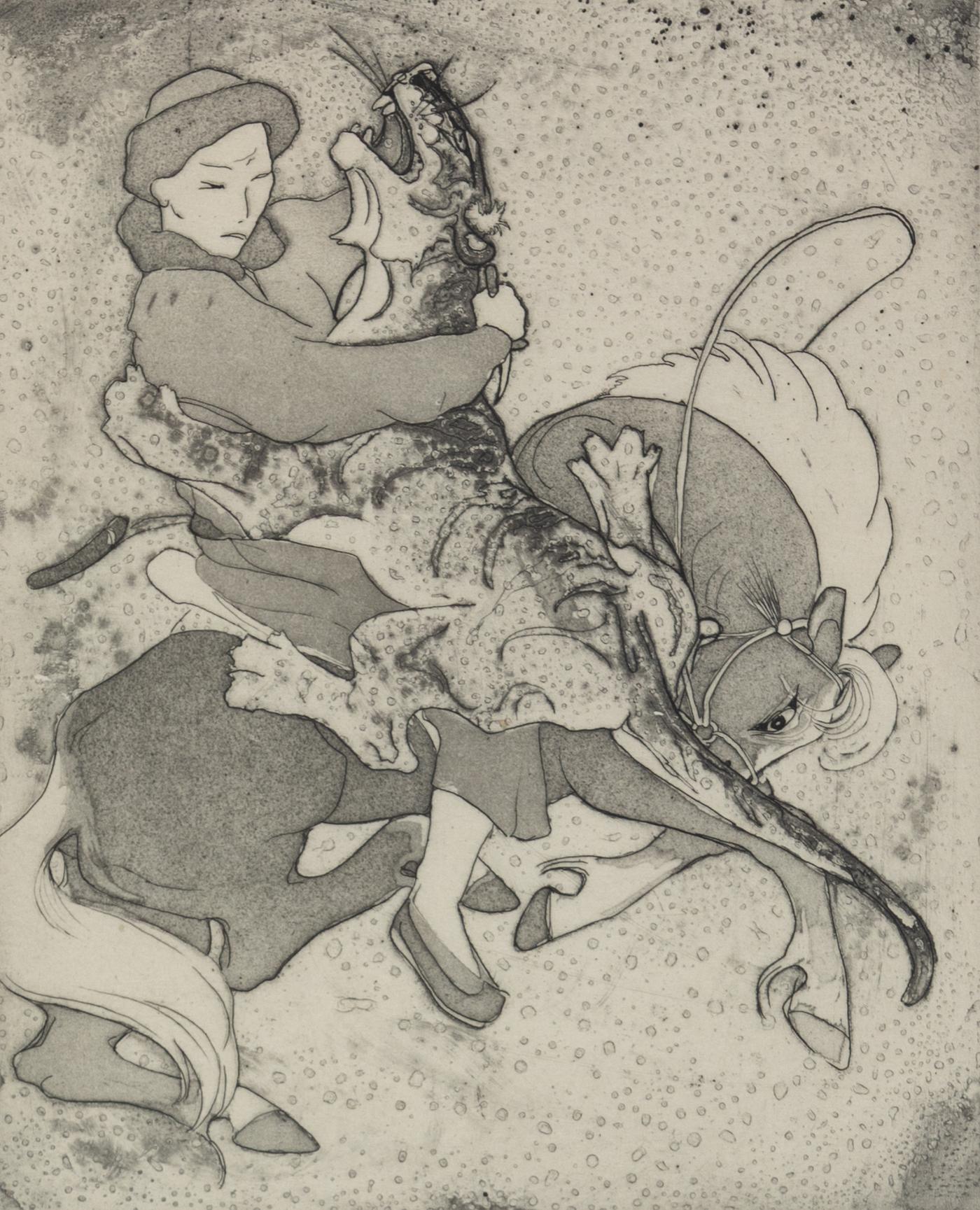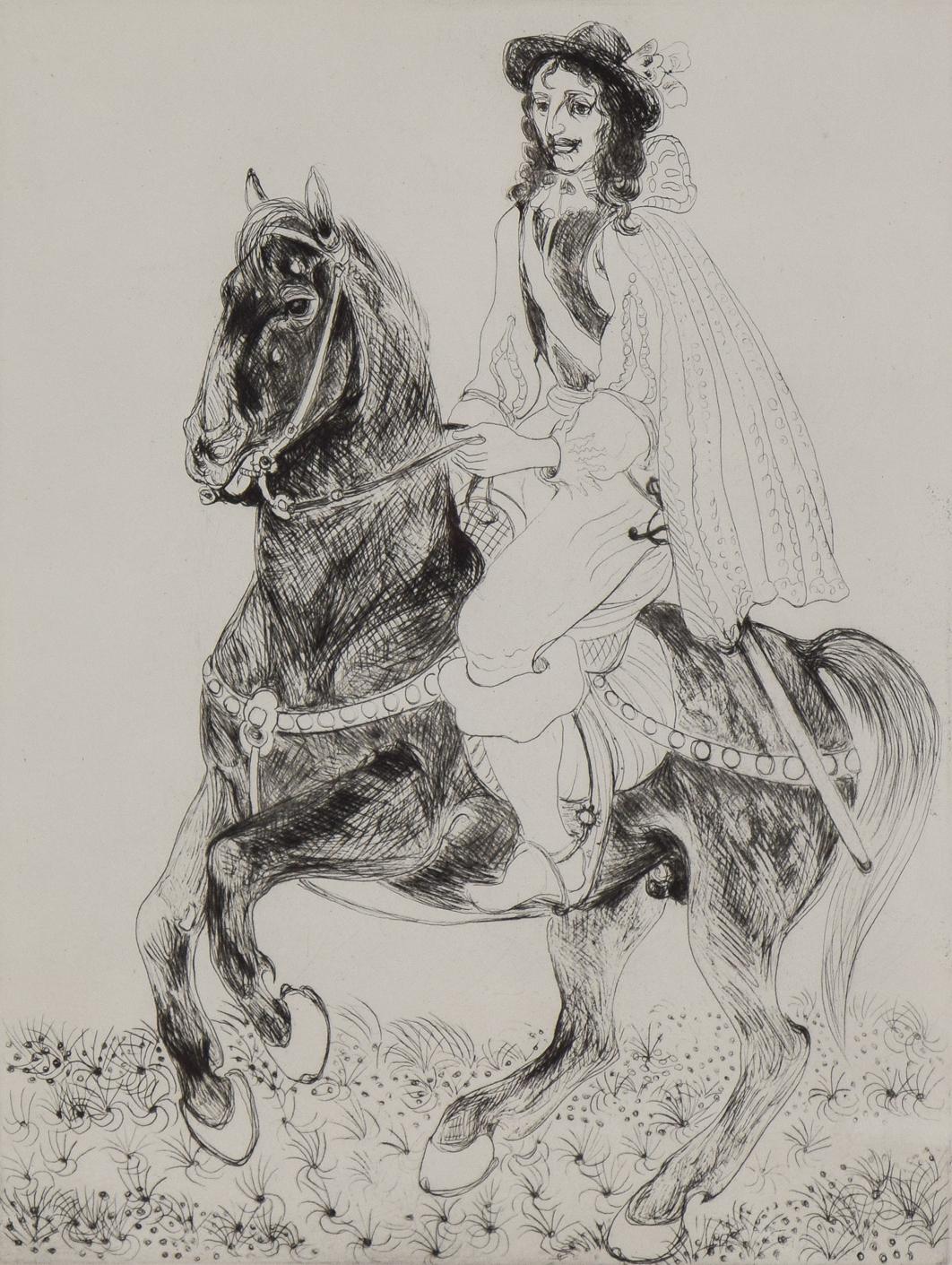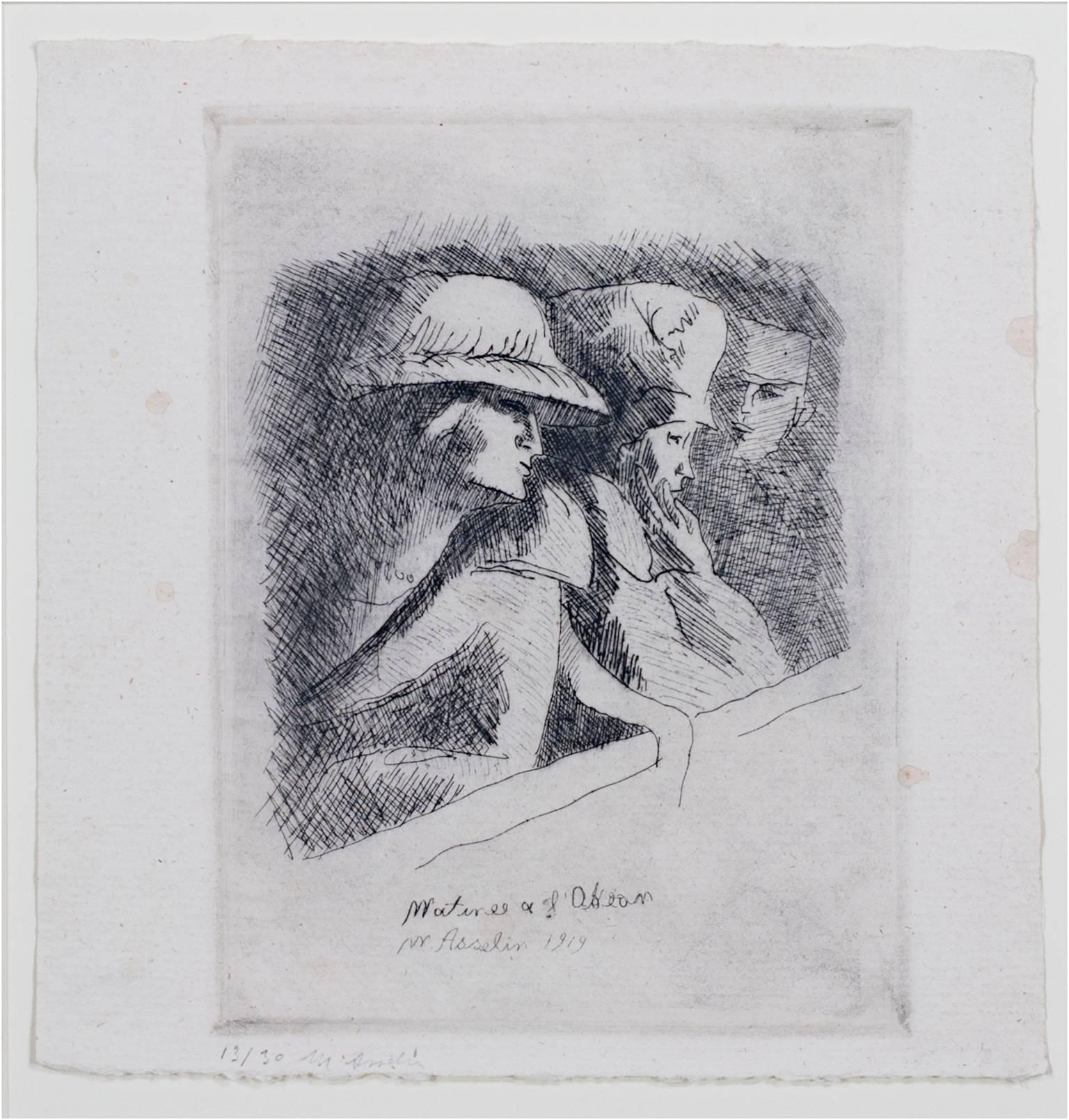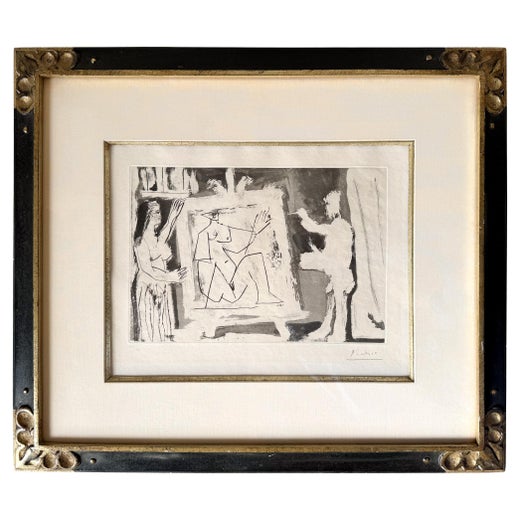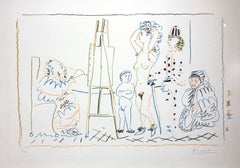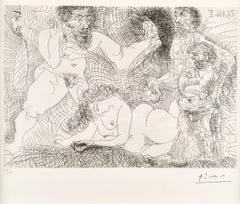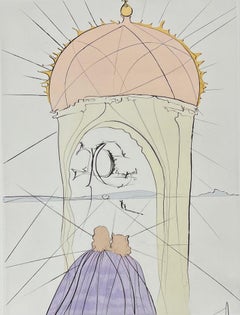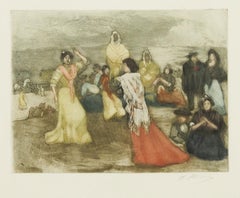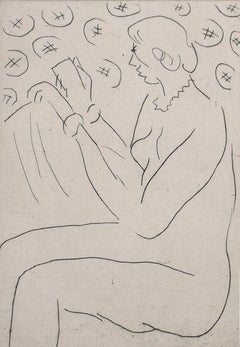
Pablo Picasso, Minotaure caressant une Femme from La Suite Vollard, etching
View Similar Items
Pablo PicassoPablo Picasso, Minotaure caressant une Femme from La Suite Vollard, etching
About the Item
- Creator:Pablo Picasso (1881-1973, Spanish)
- Dimensions:Height: 13.5 in (34.29 cm)Width: 17.5 in (44.45 cm)
- Medium:
- Movement & Style:
- Period:
- Condition:
- Gallery Location:Chatsworth, CA
- Reference Number:1stDibs: LU56132627203
Pablo Picasso
One of the most prolific and revolutionary artists the world has ever seen, Pablo Picasso had a tremendous impact on the development of 20th-century modern art. Although he is best known for his association with the Cubist movement, which he founded with Georges Braque, Picasso’s influence extends to Surrealism, neoclassicism and Expressionism.
“Every act of creation is, first of all, an act of destruction,” the Spanish artist proclaimed. In Picasso's Cubist paintings, he emphasizes the two-dimensionality of the canvas, breaking with conventions regarding perspective, foreshortening and proportion. Picasso was inspired by Iberian and African tribal art. One of his most famous pre-Cubist works is Les Demoiselles d’Avignon (1907), a painting considered immoral and shocking at the time for its depiction of nude women whose faces resemble Iberian tribal masks.
Picasso made many portraits in this style, most often of the women in his life, their expressively colored faces composed of geometric shards of surface planes. In Woman in a Hat (Olga), 1935, he painted his first wife as an assemblage of abstract forms, leaving the viewer to decipher the subject through the contrasting colors and shapes. Picasso was a tireless artist, creating more than 20,000 paintings, drawings, prints, ceramics and sculptures. Tracing his life’s work reveals the progression of modern art, on which he had an unparalleled influence.
Browse an expansive collection of Pablo Picasso's art on 1stDibs.
- Pablo Picasso, L'Atelier du vieux peintreBy Pablo PicassoLocated in Chatsworth, CAThis piece is an original lithograph in five colors by Pablo Picasso, created in 1954. Each of the 5 colors of this lithograph was executed with litho crayon on transparent transfer...Category
1950s Post-Impressionist Figurative Prints
MaterialsLithograph
- Pablo Picasso, "Untitled" from 23 novembre 1966 II, etchingBy Pablo PicassoLocated in Chatsworth, CAAn original etching created by Pablo Picasso in 1966 . It is stamp signed and numbered from the edition of 50. This piece measures 8.8 x 12.8 inches and the framed dimensions are 1...Category
1960s Modern Figurative Prints
MaterialsEtching
- Salvador Dalí, "Le musée de genie et du caprice", etching, hand colored, signedBy Salvador DalíLocated in Chatsworth, CASalvador Dalí Le Musée de genie et du caprice (The Museum of Genius and Whim) from After 50 Years of Surrealism Original etching with han...Category
1970s Modern Figurative Prints
MaterialsEtching
- Salvador Dalí, "L'amour sacré de Gala", original etching, hand colored, signedBy Salvador DalíLocated in Chatsworth, CASalvador Dalí "L'amour sacré de Gala" (The Sacred Love of Gala) from After 50 Years of Surrealism Original etching with hand coloring, ha...Category
1970s Modern Figurative Prints
MaterialsEtching
- George Rouault, Christ et Mammon from The Passion, etching, hand coloringBy Georges RouaultLocated in Chatsworth, CAGeorge Rouault "Le Christ et Mammon" from The Passion Original etching with aquatint and hand coloring, initialed lower right Paper size: 19 x 15.5 inches Im...Category
1930s Modern Figurative Prints
MaterialsEtching, Aquatint
- Salvador Dalí, "Le dos divin de Gala", original etching, hand colored, signedBy Salvador DalíLocated in Chatsworth, CASalvador Dalí "Le dos divin de Gala" (The divine back of Gala) from After 50 Years of Surrealism Original etching with hand coloring, hand sig...Category
1970s Modern Figurative Prints
MaterialsEtching
- La Loge (The Lodge) /// Post-Impressionist Figurative French Paris People ArtBy Louis LegrandLocated in Saint Augustine, FLArtist: Louis LeGrand (French, 1863-1951) Title: "La Loge (The Lodge)" Portfolio: Gazette des Beaux-Arts *Issued unsigned, though signed by LeGrand in the plat...Category
1910s Post-Impressionist Figurative Prints
MaterialsDrypoint, Etching, Intaglio
- SevillanasLocated in Fairlawn, OHSevillanas Etching and color aquatint on laid watermarked paper, c. 1900 Signed by the artist in pencil lower right (see photo) Editioned in pencil lower left corner of sheet Publish...Category
Early 1900s Post-Impressionist Figurative Prints
MaterialsAquatint
- Figure Reading - Etching - Fauvism - French ArtBy Henri MatisseLocated in London, GBHENRI MATISSE 1869-1954 (Emile Benoît) Le Cateau-Cambrésis 1869-1954 Nice (French) Title: Figure Reading Figure lisant, 1929 Technique: Original Hand Signed and Numbered Etching o...Category
1920s Fauvist Figurative Prints
MaterialsEtching
- La Marchande des Quatres-SaisonsBy Edgar ChahineLocated in Middletown, NYEtching with drypoint on cream wove paper, 11 3/4 x 13 3/4 inches (297 x 347 mm), full margins. Signed in pencil and numbered 32/40, lower margin. Minor mat tone and several small lo...Category
Early 20th Century Post-Impressionist Portrait Prints
MaterialsHandmade Paper, Rag Paper, Drypoint, Etching
- Chatter by Orovida Pissarro - EtchingBy Orovida PissarroLocated in London, GBChatter by Orovida Pissarro (1893-1968) Etching 26 x 19 cm (10 ¹/₄ x 7 ¹/₂ inches) Signed and dated lower right Orovida 1927 Inscribed lower left Trial proof no. 18/25 and titled lower middle Artist biography: Orovida Camille Pissarro, Lucien and Esther Pissarro’s only child, was the first woman in the Pissarro family as well as the first of her generation to become an artist. Born in Epping, England in 1893, she lived and worked predominantly in London where she became a prominent member of several British arts clubs and societies. She first learned to paint in the Impressionist style of her father, but after a brief period of formal study with Walter Sickert in 1913 she renounced formal art schooling. Throughout her career, Orovida always remained outside of any mainstream British art movements. Much to Lucien's disappointment she soon turned away from naturalistic painting and developed her own unusual style combining elements of Japanese, Chinese, Persian and Indian art. Her rejection of Impressionism, which for the Pissarro family had become a way of life, together with the simultaneous decision to drop her famous last name and simply use Orovida as a ‘nom de peintre’, reflected a deep desire for independence and distance from the weight of the family legacy. Orovida's most distinctive and notable works were produced from the period of 1919 to 1939 using her own homemade egg tempera applied in thin, delicate washes to silk, linen or paper and sometimes embellished with brocade borders. These elegant and richly decorative works generally depict Eastern, Asian and African subjects, such as Mongolian horse...Category
1920s Post-Impressionist Figurative Prints
MaterialsEtching
- Man & Beast by Orovida Pissarro - EtchingBy Orovida PissarroLocated in London, GB*UK BUYERS WILL PAY AN ADDITIONAL 20% VAT ON TOP OF THE ABOVE PRICE Man & Beast by Orovida Pissarro (1893-1968) Etching 27 x 22 cm (10 ⁵/₈ x 8 ⁵/₈ inches) Signed and dated lower right, orovida 1924 Inscribed lower left, Final state no 12/40 and titled lower centre Artist biography: Orovida Camille Pissarro, Lucien and Esther Pissarro’s only child, was the first woman in the Pissarro family as well as the first of her generation to become an artist. Born in Epping, England in 1893, she lived and worked predominantly in London where she became a prominent member of several British arts clubs and societies. She first learned to paint in the Impressionist style of her father, but after a brief period of formal study with Walter Sickert in 1913 she renounced formal art schooling. Throughout her career, Orovida always remained outside of any mainstream British art movements. Much to Lucien's disappointment she soon turned away from naturalistic painting and developed her own unusual style combining elements of Japanese, Chinese, Persian and Indian art. Her rejection of Impressionism, which for the Pissarro family had become a way of life, together with the simultaneous decision to drop her famous last name and simply use Orovida as a ‘nom de peintre’, reflected a deep desire for independence and distance from the weight of the family legacy. Orovida's most distinctive and notable works were produced from the period of 1919 to 1939 using her own homemade egg tempera applied in thin, delicate washes to silk, linen or paper and sometimes embellished with brocade borders. These elegant and richly decorative works generally depict Eastern, Asian and African subjects, such as Mongolian horse...Category
1920s Post-Impressionist Animal Prints
MaterialsEtching
Recently Viewed
View AllRead More
Science Uncovers Hidden Truths behind Young Pablo Picasso’s Blue Period
From 1901 to 1904, Picasso limited his palette to bluish hues in producing some of his most famous early works. A new show looks at the recycled materials, hidden underpaintings, surprising influences and bohemian lifestyle that led to their creation.
Who Are the Most Popular Artists on 1stdibs?
Learn the stories of some of the world's most recognizable artworks and their makers.
